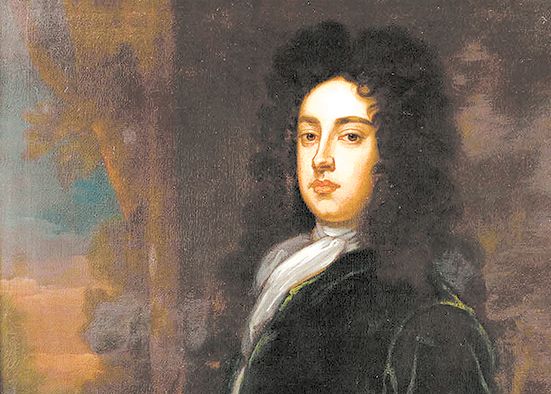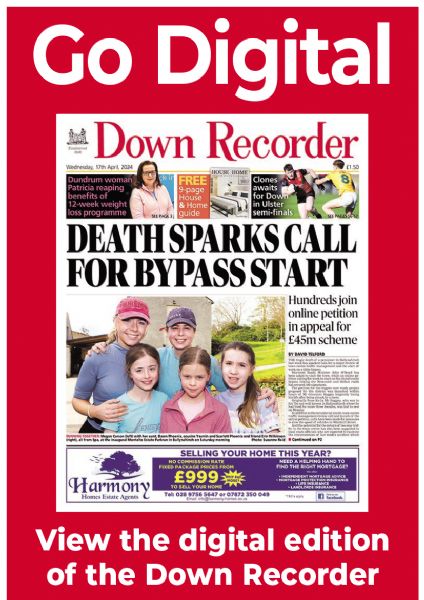Fantastic portraits of the illustrious Southwell family shows richness of museum collections
Fantastic portraits of the illustrious Southwell family shows richness of museum collections
15 June 2022

MUSEUMS are treasure chests, full of interesting collections reflecting the location and community they serve. Those in charge of the collections — the curators — are specialists in specific subjects and also assist one another by sharing their specialist knowledge and skills.
I referred in a previous article in this newspaper to the partnership between me and the former Keeper of Collections at Down County Museum, Lesley Simpson. This article focuses upon portraits in the Down County Museum collection of a family with close ties with Downpatrick. It is based on my research which was initially published in People of Down, in 2008 and later in a catalogue of the museum’s entire fine art collection, Art of Down.
Down County Museum is fortunate to own three portraits of members of the Southwell family: two of Edward (1671-1730) and one of his wife, Lady Elizabeth (1674-1709). The earliest of the portraits, that of Edward, which depicts him in a head and shoulders format, was possibly painted in 1702.
Though a fine portrait, it is somewhat sombre in tone compared with the two three-quarter length works which can be seen in the permanent galleries of the museum. These possibly date from 1705 and were probably painted as a pair. All three portraits have been attributed by the author to Sir Godfrey Kneller (1646-1723) on stylistic grounds.
German-born Godfrey Kneller studied in Amsterdam, Rome and Venice before moving to London in 1676. Such was his success as a portraitist that two years later, he was commissioned to paint King Charles II. The most renowned court and society painter of his day, he served as principal painter under five monarchs, received a knighthood and baronetcy and amassed a large fortune.
Characteristics of his style include a dislike of ‘finish’ and detail (especially in the sitters’ features) and a free and vigorous handling of paint. These traits are evident in these two portraits, in the lack of detail — note the plainness of Lady Elizabeth’s dress; also, in the broad brushwork of the paint and sketchy treatment of the clothing.
Another factor in the attribution of the portraits to Kneller is the fact that he knew the Southwell family well, having painted Edward’s father, Sir Robert, around 1679 and also in 1690 and 1695, Edward previously, in 1693 and his sisters Helena and Elizabeth in 1694.
He also painted Lady Elizabeth (or ‘Lady Betty’, as she was generally known) on three other occasions before 1705. In all, he was to paint Edward, Lady Betty and various other family members at least twenty-two times by 1708. That the portraits are by him is almost certain.
Edward Southwell had a distinguished career as a politician and government official, being Secretary of State for Ireland and chief secretary to the Lord Lieutenant of Ireland, the 2nd Duke of Ormond. By his marriage to Lady Elizabeth Cromwell in 1703, he acquired the Manor and town of Downpatrick and although an absentee landlord, did much to improve the town.
Lady Betty spent her early years at Bonecastle, west of Downpatrick and later, lived at Ballee House and then Hollymount. It seems likely that she met Edward in London, where her father had rented a house. The small boat in the right background of her picture — an unusual feature in a female portrait — may be a reference to her origins as the only child of the 4th Earl and Countess of Ardglass.
The Southwell Schools and Almshouses, one of the most iconic buildings in Downpatrick, was erected in 1733 by Lady Betty and Edward’s son, Edward Southwell II (1705-55), a magnificent legacy by this most important of families.
Dr Eileen Black is the former Curator of Fine Art at the Ulster Museum.
Post: These paintings came from three different sources at different times. It was thanks to fine art dealer Mark Donnelly, of Clough, that two of them were discovered and purchased. Lesley Simpson raised the grant aid from the National Art Collections Fund and Northern Ireland Museums Council not only to buy them but to pay for the restoration of paintings and picture frames. Dr Black’s attribution to Godfrey Kneller is immensely important. The pair of portraits, of Edward and Lady Betty, can be seen on display in the Down through Time permanent exhibition in Down County Museum.

